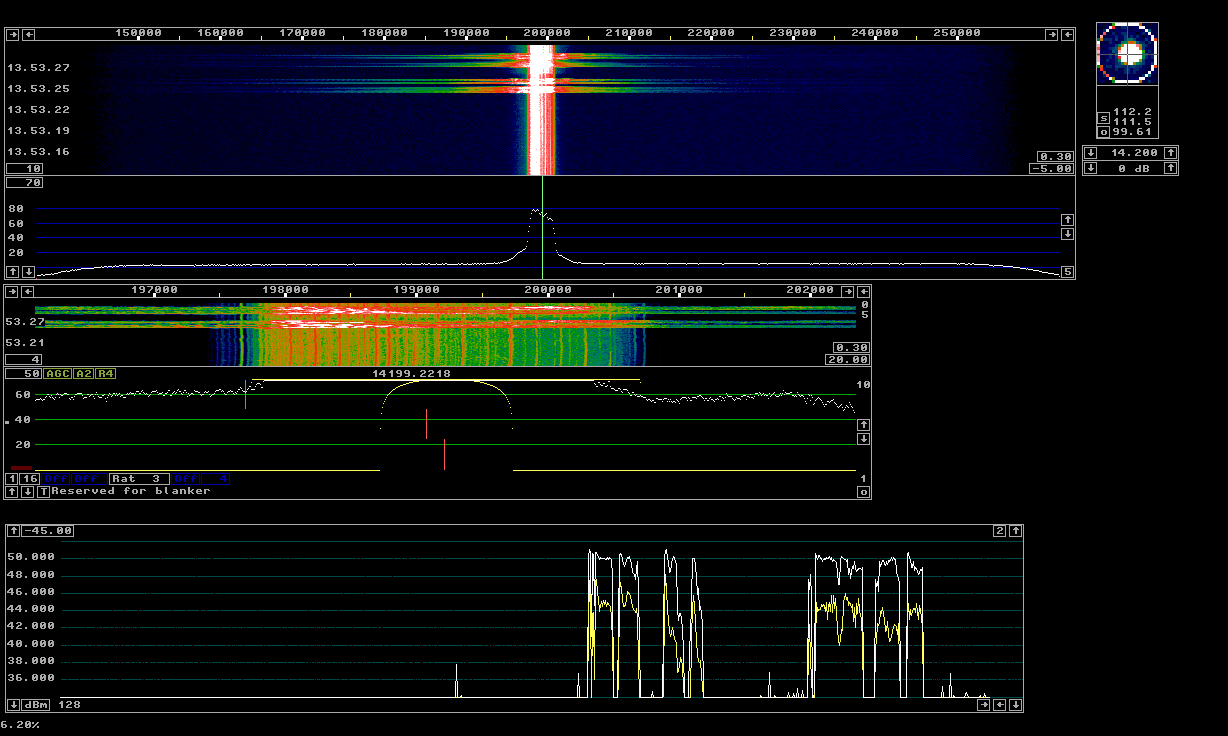
|
The Linrad speech processor is described here:
The first generation of the Linrad speech processor.
It was introduced already with Linrad-02.36.
It has been a tool in the development of my radio hardware by
emitting I and Q for my TX converters.
Now when Linrad is a fully working transceiver for 144 MHz at
my QTH I have completed the functions needed to run the
speech processor for single channel output so Linrad-02.50 and
later should be useful as a pre-processor
for an ordinary SSB transmitter.
Figure 1 shows the phonetics bravo yankee repeated twice
on a TS-520.
The first time the signal is generated with the original microphone
connected to the TS520.
The second time the output from the Linrad speech processor is
used.
|
|
Fig 1. The phonetics bravo yankee repeated twice. The first time with the original microphone, the second time with the Linrad speech processor. The TS-520 has a well behaved ALC. Running it according to the manual with the DX knob pulled does not produce much ALC generated splatter. With the Linrad speech processor, the microphone signal produced by Linrad is set to a level where there is no ALC action at all. The peak power is then a few tenths of a dB lower, but the average power is a little higher. The waterfall shows that the splatter is reduced, but just a little. The splatter from the TS-520 is dominated by third order intermodulation in the power amplifier but a modern transceiver that suffers from ALC-generated splatter should show a great improvement in signal purity. With some aluminium foil wrapped around a Perseus it was possible to record the 100W output from the TS-520 at a low S/N. Compare these two recordings: Original microphone Compressed with Linrad They contain the same text from the TS-520 manual. The difference is not great, but it is there. decide for yourself if you think it is worth the trouble to learn how to use the Linrad speech compressor. Other hams who have suffered from ALC generated splatter would be delighted if you run higher (average) power without any ALC action at all. In case S/N is too low in the above recordings, try these ones which are recorded with a somewhat better S/N and with a slightly different baseband filter on the receive side. Original microphone, higher level Compressed with Linrad, higher level From the recordings at a better S/N it is quite obvious that the old TS-520 suffers from a frequency instability. The carrier frequency changes considerably when the final amplifier delivers output. The frequency instability degrades readability more when the original microphone is used simply because the load on the power supply fluctuates quite a lot. The carrier frequency is more stable with the Linrad speech processor because the output power is more constant when it is used. At normal S/N the speech processing demonstrated on this page distorts the voice signal far too much. Linrad allows you to have different settings for different circumstances. Note that the Linrad speech processor can be used for FM or any other analog voice mode. |